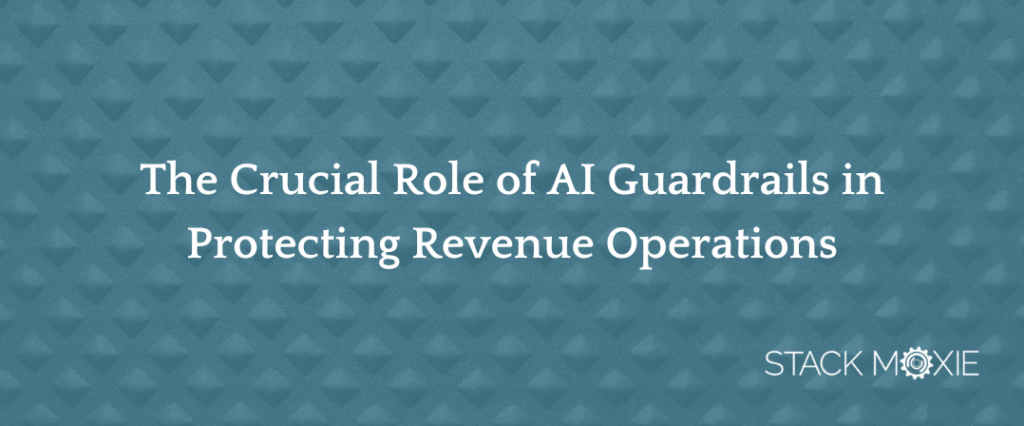For most organizations, the past year has been spent trying to understand and implement new ways to leverage artificial intelligence for the business—to work smarter, to win revenue faster, and to make the products that we use and that we build for our customers better.
But this wave of the AI revolution has also made everything more complex. And for revenue teams, the challenge now is to figure out how to keep the intricate stack of critical infrastructure that they manage up and running, or risk hurting customer experience and revenue.
AI’s potential to optimize processes, enhance decision-making, and drive growth is undeniable. And as its adoption accelerates, it’s crucial to strike a balance between harnessing its power and keeping it manageable. The revenue teams that are able to do this, and prove their ability to work with AI instead of trying to chase it, will be the ones that succeed in this new era.
AI’s Role in Transforming Revenue Infrastructure
AI is not just a technological advancement; it has revolutionized revenue operations to force multiply its efforts. When implemented properly, it enables businesses to not only understand their customers better but also predict their needs and preferences, for highly personalized customer experiences.
The operational efficiency it can provide not only reduces costs, but also enhances the effectiveness of revenue teams. And for orgs that want their revenue infrastructure to operate smarter, faster, and more profitably, the time to start implementing it is now.
Managing AI Complexity
Revenue technology has always been too complicated to manage alone. AI has scaled this up, and as the ones responsible for every dollar of revenue and some of the organization’s most critical infrastructure, revenue and revenue operations teams must have the tools to test and observe their full stack, automatically and regularly.
From data errors that can cascade throughout an organization and impact decisions, customer relationships, and ultimately, revenue, to misalignment with revenue objectives that can result in processes and technologies that don’t align with overarching revenue goals, AI implementation carries risk. And with so much at stake, the margins for error are thin.
Guardrails for Safe AI Implementation
To navigate the AI landscape safely, organizations must establish robust guardrails. Continuous monitoring is essential. Real-time assessment of AI performance and data quality allows organizations to detect and address issues promptly, and early intervention prevents minor disruptions from snowballing into major problems that impact revenue streams.
When the tools to monitor your entire stack are put in place, it ensures that errors are caught before customers see them. Teams can continue to move quickly and find new ways to implement AI, but also rest assured that if something goes wrong, they won’t find out after damage has already been done.
Enter Stack Moxie’s Revenue Observability Tool
Stack Moxie is the guardrail teams need to push their utilization of AI safely and with confidence. Teams bring observability to their infrastructure for a new level of visibility while automating the manual and repetitive tasks that normally take hours out of their week. These same capabilities provide real-time insights into AI processes, offering a proactive approach to ensuring the success of your AI implementation.
And to help teams master the journey of implementing AI into their HubSpot stack, we’re hosting HubSpot AI Mastermind. This event, designed for a small group of peers who are ready to introduce AI to their operations the right way, will feature a series of expert speakers and give attendees the opportunity to share their experiences and learn from each other.

